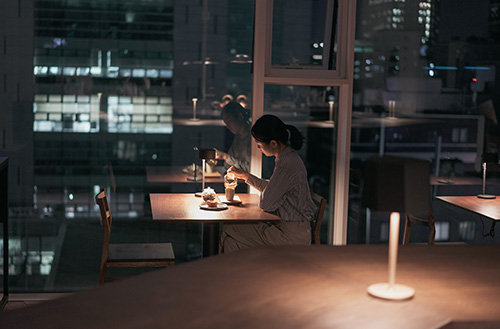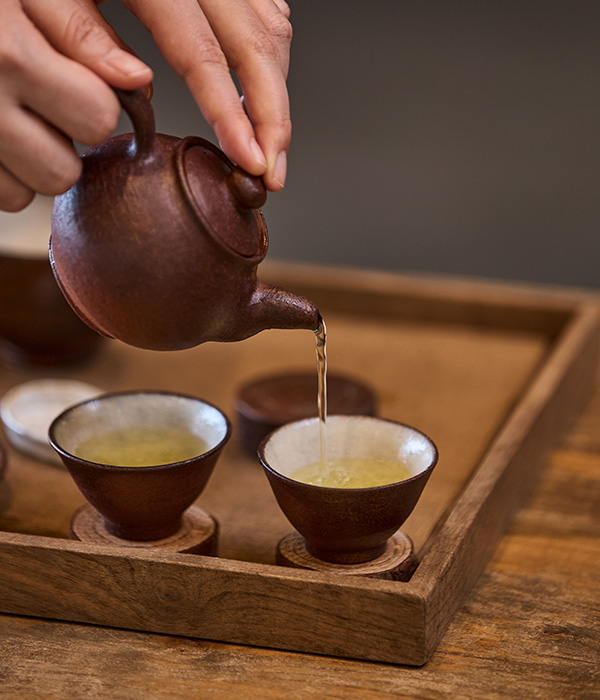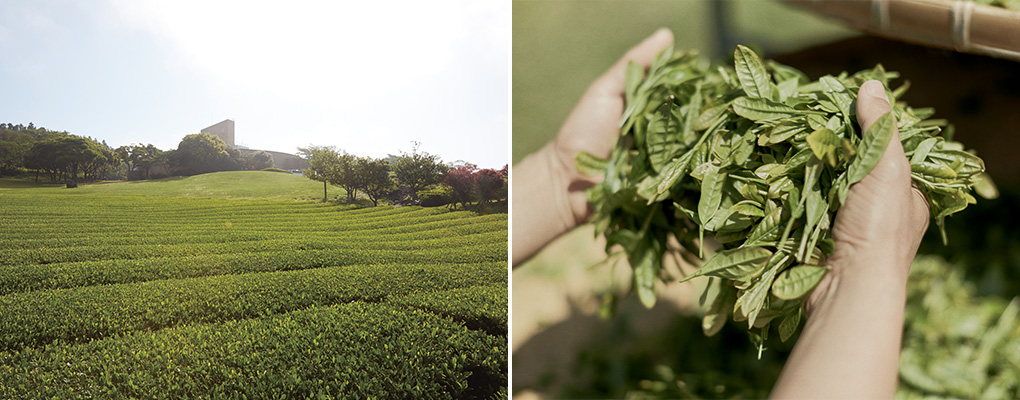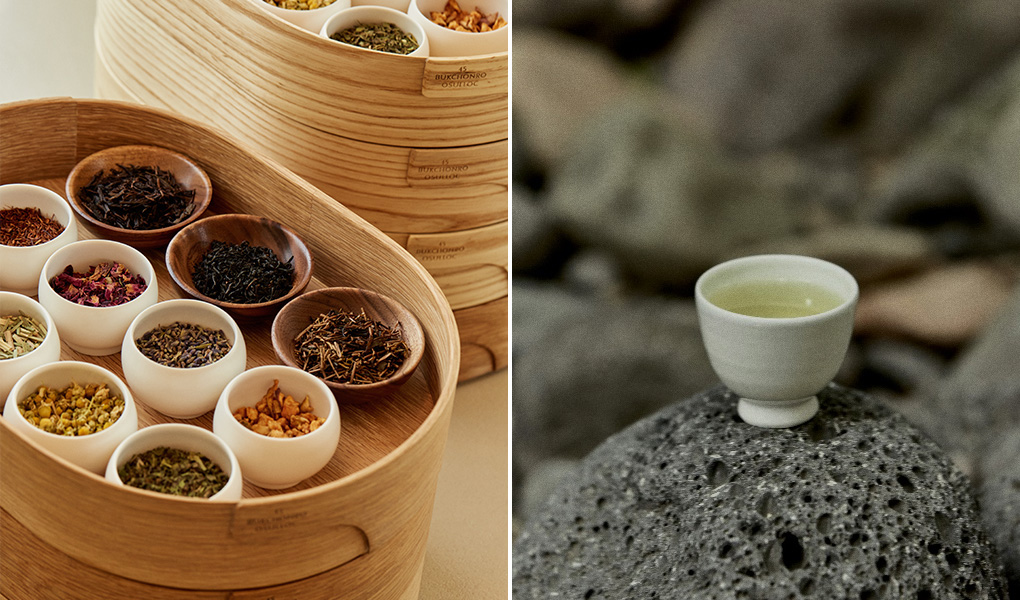

Everyday Tea, Savoring the Moment

Written by
Kim Se-mi CEO, Magpie & Tiger

In my late twenties, battling severe gastrointestinal issues and burnout, I began drinking tea. It was a time of striving for more outstanding excellence and rapid growth, a junior's journey marked by the ever-widening gap between ideals and reality. However, illness of body and mind arrived before the growth I sought. During these listless days, I was gifted tea-making tools, accompanied by the suggestion to try tea. Brewing tea in my dimly lit room after work, I found solitude in these moments, marking the beginning of my life with tea. It was the only time of day steeped in tranquility.
Thus began my daily ritual of tea drinking, leading up to this very day. On days when I'm overwhelmed, I set my tea space. When my mind is cluttered, I choose to move, to focus on my senses. Immersing myself in the taste and aroma of tea, I seek out a calm, deep stillness. Indeed, the hearts of those who love tea aren't much different.

The Spirit That Flows Through the Teacup
Tracing back the culture of tea enjoyment, we find diverse tea processing and brewing methods across eras. From the vigorous boiling of tea leaves to whisking matcha powder to steeping leaves in warm water, the tea culture has evolved with time, cultural exchanges, and national policies. Yet, the attitude towards tea has remained consistent. Perhaps here lies a clue to what makes tea ‘distinctly Korean.’ In the teacups of the Hwarang who roamed the nation to train their body and mind, in the cups for foreign delegations, and in those shared among Dasan Jeong Yak-yong and his friends, something significant was present. I believe in this spirit emanating from the teacups before us, even though it's often overlooked or misunderstood.
So, what defines ‘Korean tea’? The philosophy always starts with drawing lines – discerning what to keep and what to discard in our quest for authenticity. The most crucial aspect of making a cup of tea is its cultivation. As in the concept of the terroir* of wine, tea plants vary in component ratios depending on the region's characteristics and environmental conditions. Add to this the variables of species, processing methods, brewing water, temperature, and tea tools, and the world sees thousands of tea varieties. The quality of tea is contingent on its cultivation; Korea continually searches for climates and regions suitable for tea growth and develops its tea plant varieties, constantly researching to better define Korean tea.

Jeju's soil, sunlight, water, wind, and fog create its unique terroir. Jeju's abundance of stones as a volcanic island posed challenges to tea-field cultivation, but its volcanic-ash soil is rich in organic matter. Tea plants, demanding high rainfall yet good drainage, thrive in Jeju's gravelly soil, termed ‘dense soil,’ which sinks underfoot. With a mild average temperature of 14-16°C and annual rainfall exceeding 1,800 mm, and nestled between the sea and Hallasan Mountain, this environment is ideal for tea. The winds from the sea and mountain and the sea fog from March to May enhance the tea leaves' amino acid content, adding sweetness and deliciousness.

Jeju's emergence as a tea-growing region owes much to OSULLOC. Shifting focus from the established tea fields near Jirisan Mountain and Jeolla-do to Jeju was a significant move. Developing tea fields is undoubtedly challenging, a task misaligned with today's fast-paced world, even more so in the untouched lands of Jeju. Imagine beginning with barren land filled with rocks, facing the daunting task without technology or equipment. Some would envision the budding green tea leaves, while others might see only the arduous journey until harvest. A tea field is born of collective hopes, dreams, certainty, and a positive outlook on the future; the consistent mindset can be described as miraculous.
The Significance of a Cup of Tea
If even a roadside weed gains meaning when regarded with affection and named, perhaps the significance of OSULLOC's journey lies in its tea leaves being placed in someone's cup. Our tea culture, the cultivation, planting, and nurturing of tea plants, all exist for the moment of enjoyment. It goes beyond adding tea to our daily lives, bringing leisure and relaxation to more people and helping them discover themselves in the process. Modern tea culture transcends a healthy drink, embodying an attitude towards life.

“Tea is about boiling water, letting it cool appropriately,
waiting for the tea to infuse, finding rest and contemplation, and then savoring it leisurely.”
- From “Beautiful Persistence,” p. 214 -
I cherish the philosophy encapsulated in this sentence by OSULLOC. It resonates deeply for those who love tea and have made it a part of their lives. Tracing back Korea's tea history, we see that the classes enjoying tea and the methods and meanings have subtly shifted over time. Tradition is not static or immutable; it evolves with the flow of time. While tea was once a culture enjoyed by specific classes, in today's era, the tea gathering represents a moment of respite in our rapidly changing, flowing daily lives. Despite its long history and evolving forms, tea has always been enjoyed, and perhaps this is why it remains beloved. Beyond the cup, tea adds something essential to life, thus sustaining its enduring appeal.
Nurturing the Self with Tea
These days, I sense an increase in the number of people turning to tea. Perhaps we have entered an era that necessitates tea. As life accelerates and the abundance of stimulating short-form content grows, this shift toward tea seems almost inevitable. Magpie & Tiger's Seongsu Tearoom, born from a desire to integrate tea into daily life, has become a destination for many. It's a space where sipping tea while working or reading doesn't feel the slightest bit out of place.

ⓒMagpie & Tiger
I often find myself recommending teas to our guests. I inquire about their usual preference for coffee or tea and suggest teas that complement the day's weather, sparking conversations. The increasing preference to “reduce caffeine and turn to tea in the afternoons” resonates with me, perhaps because it mirrors the healthy lifestyle I've always envisioned.
* Terroir: A wine term meaning the unique flavor and aroma characteristics imparted to wine by the environment in which the grapes are grown.
‘Beauty Road’ encapsulates the stories of Amorepacific, which has created a beauty culture.
Every month, through the columns of experts on various topics, experience the values of Amorepacific from a unique perspective.
Written Kim Se-mi
Photos Amorepacific / Magpie & Tiger
PlanningAmorepacific Communications Team
-
Like
1 -
Recommend
0 -
Thumbs up
0 -
Supporting
0 -
Want follow-up article
0





